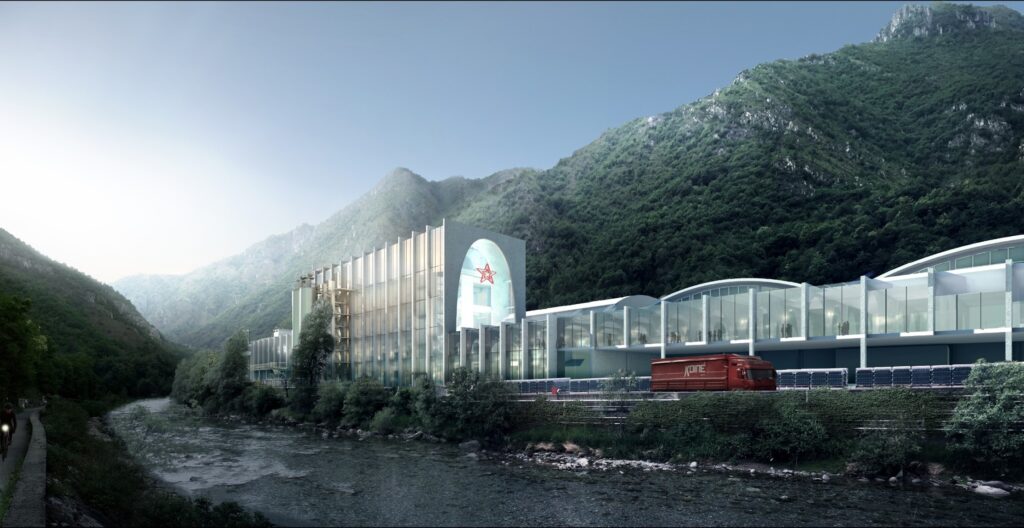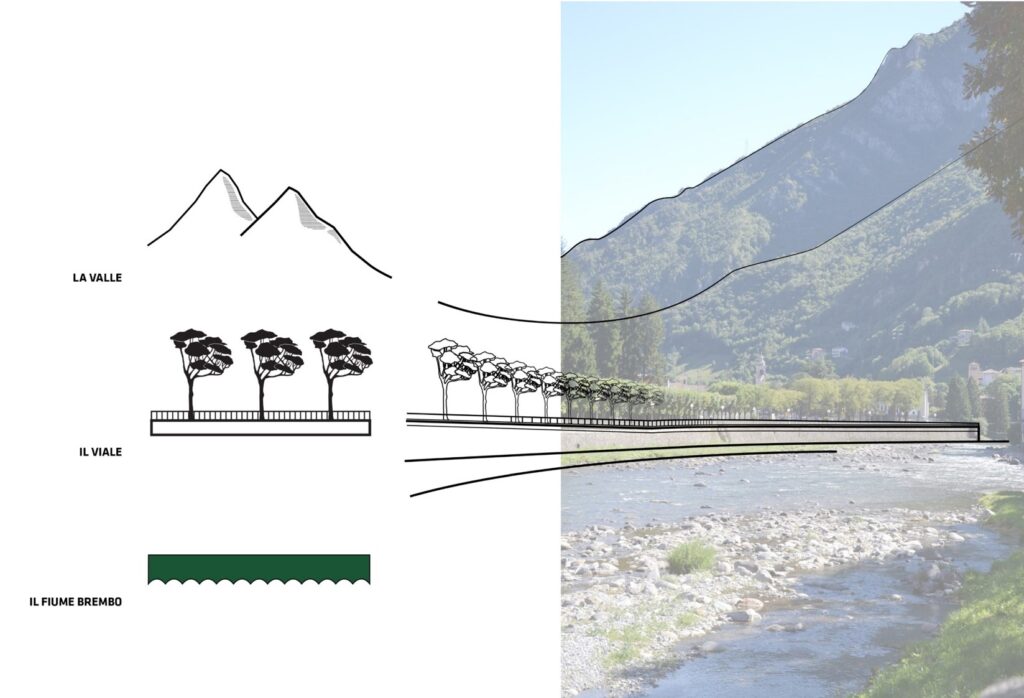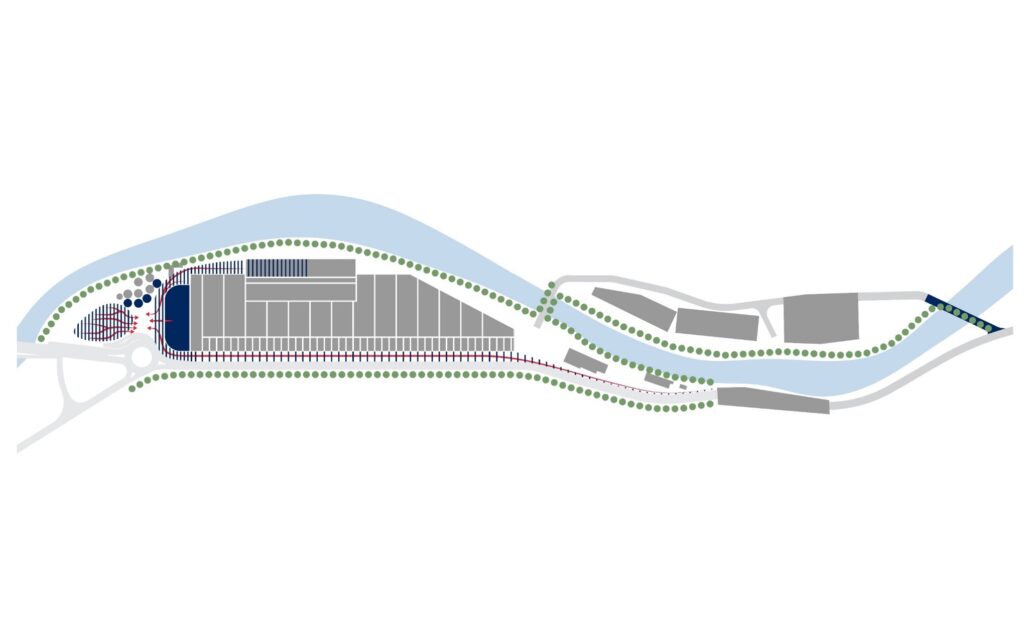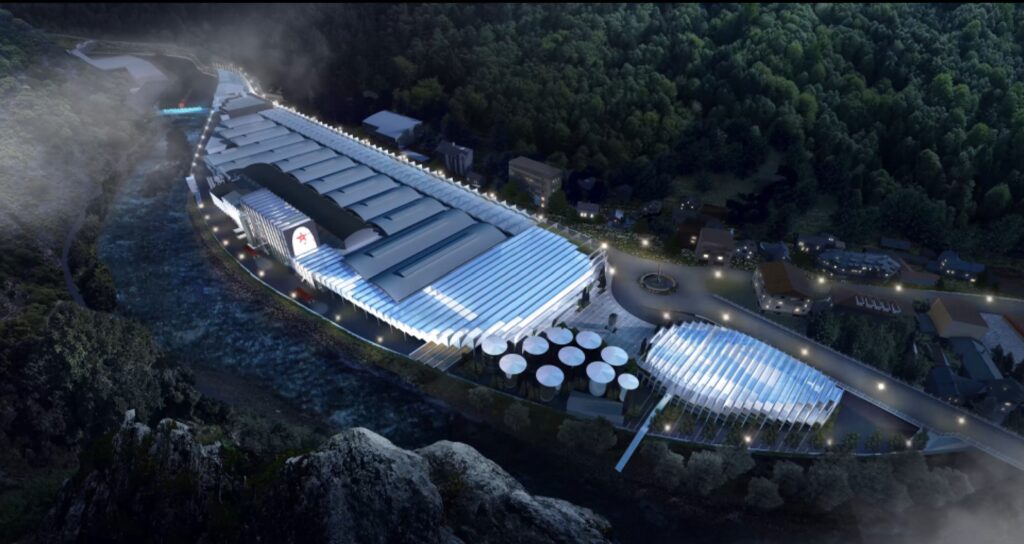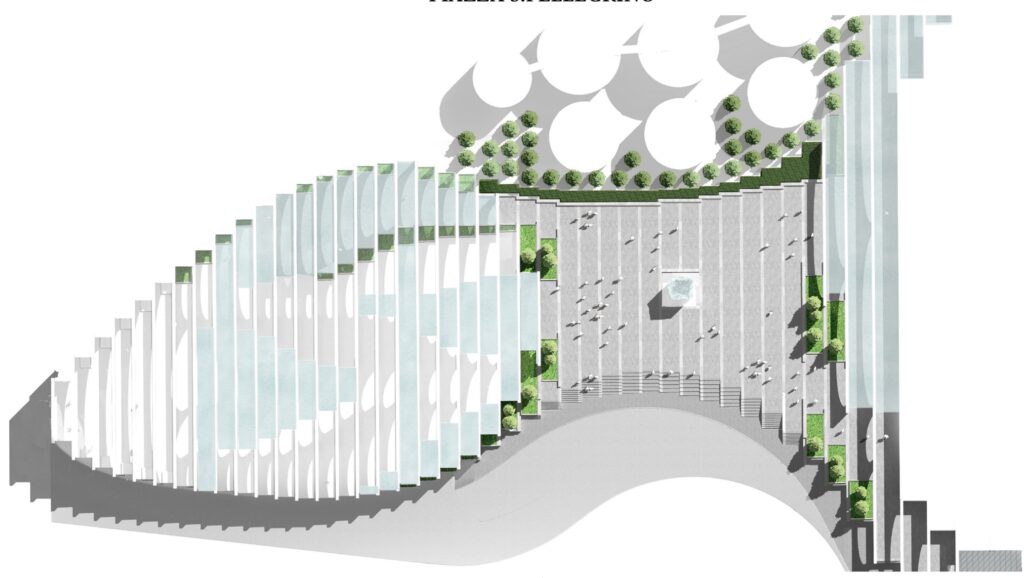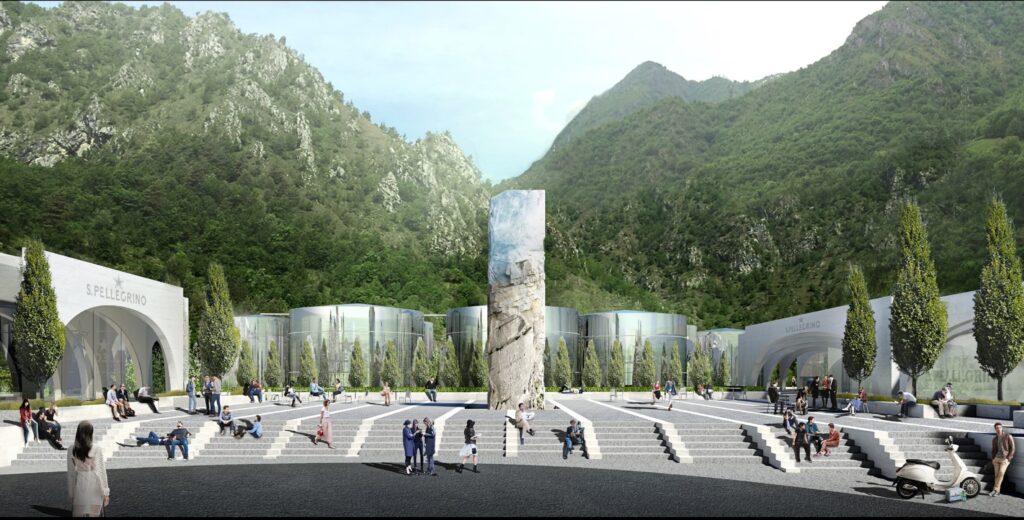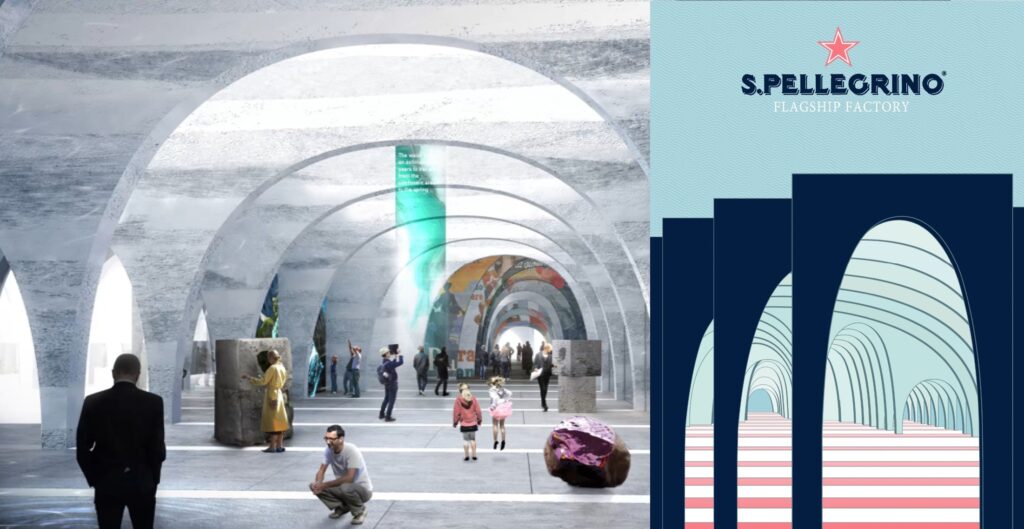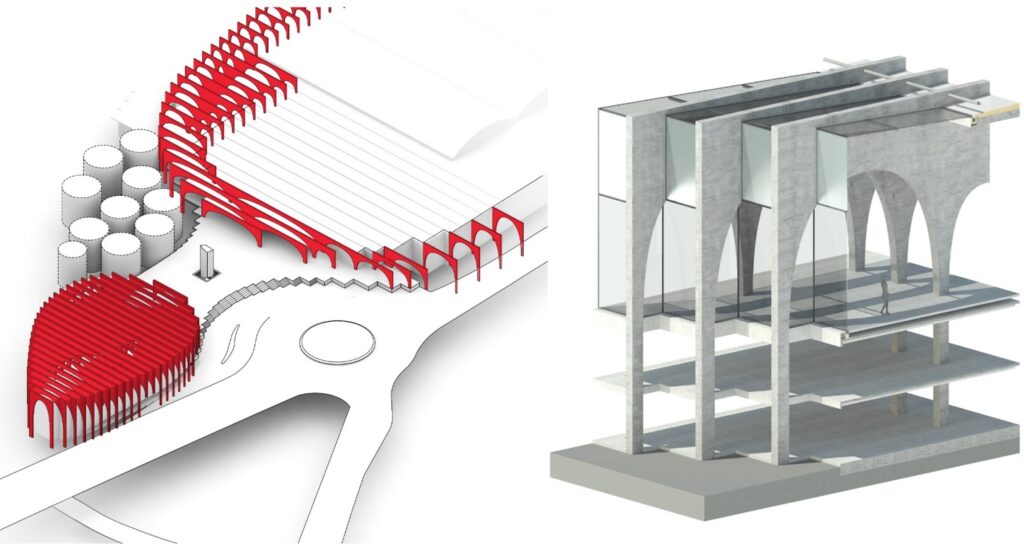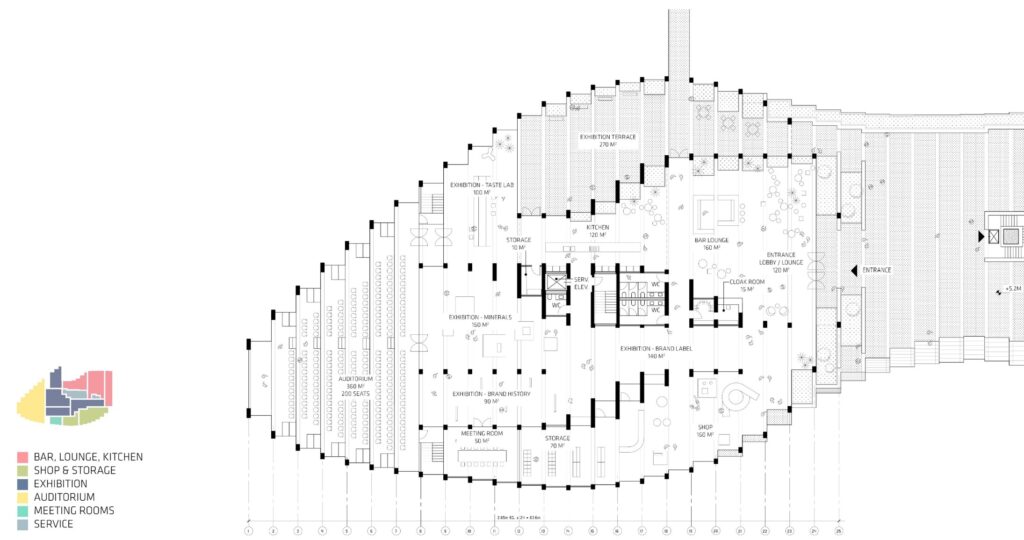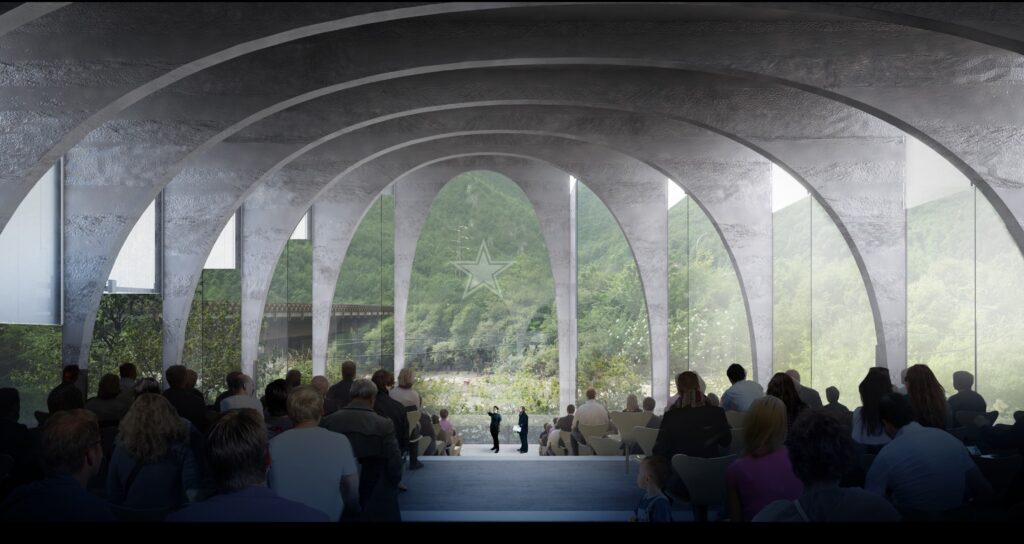San Pellegrino Flagship Factory, Italy
Architects: Bjarke Ingels Group - BIG Architects New York
Client: San Pellegrino
Services: Concept Design and Scheme Design
Location: San Pellegrino Terme
Located in the Brembana valley between the Brembo river and at the foot of the Italian alps, the project embraces and enhances the existing architecture while forming an elegant framework that will allow the visitors to sense the power and purity of the surrounding Alpine nature. San Pellegrino's new Factory of the Future will be built in complete harmony with its surroundings, creating continuity between the surrounding environment, production activities and the wellbeing of workers and the local community, commented arch. Bjarke Ingels. Bjarke Ingels. The design develops around a main architectural element: the arch. The simple and clear character of the expanding and contracting arches throughout the campus, create a multitude of spaces and experiences. The visitors and S. Pellegrino employees will walk through majestic vaults, covered tunnels, arcades and green pergolas that frame the history and heritage of the brand. The seriality of the architecture will reveal parts of the surrounding mountains from the snowcapped summit to the running river at the base. With the aim of giving continuity between production and consumption, the traditional separation between production lines and offices, typical of factories, has been eliminated. Following the construction of the bridge that will connect the complex to the Zogno bypass, and then the construction of the multi-storey car park for heavy vehicles, the focus will be on the offices and the northern part of the factory, where the San Pellegrino Experience Lab will be built, a futuristic place where visitors can discover the values of mineral water and relive the journey of 30 years of the famous mineral water. The Experience Lab area will also include an Auditorium for conferences, gala events and dinners, with its related facilities. The acoustic design involved the assessment of the sound insulation of the building envelope from road traffic coming from the SS470 road that runs in the vicinity of the factory, from noise and vibrations generated by heavy loading and unloading vehicles entering and leaving the factory area and passing near the façade of the auditorium and the office block, and from noise and vibrations generated by the building services. Internal sound insulation as well as the room acoustics of the spaces were other focuses of the acoustic design in order to ensure privacy and comfort between and within the spaces. Discussions and comparisons with the architects took place in order to maintain the architectural design idea of simple, clean lines supported by primary materials such as glass and concrete. In this content, the acoustic design gave a contribution to the overall design in order to provide integrated elements and finishes that would complement and support the architectural design and at the same time help the final result in acoustic terms, according to the intended use of the space. Finally, the control of noise from the building services was carried out in order to achieve the background noise suitable for the type of space and to ensure the achievement of noise limits at the façade of noise sensitive receptors in the vicinity of the San Pellegrino complex.

